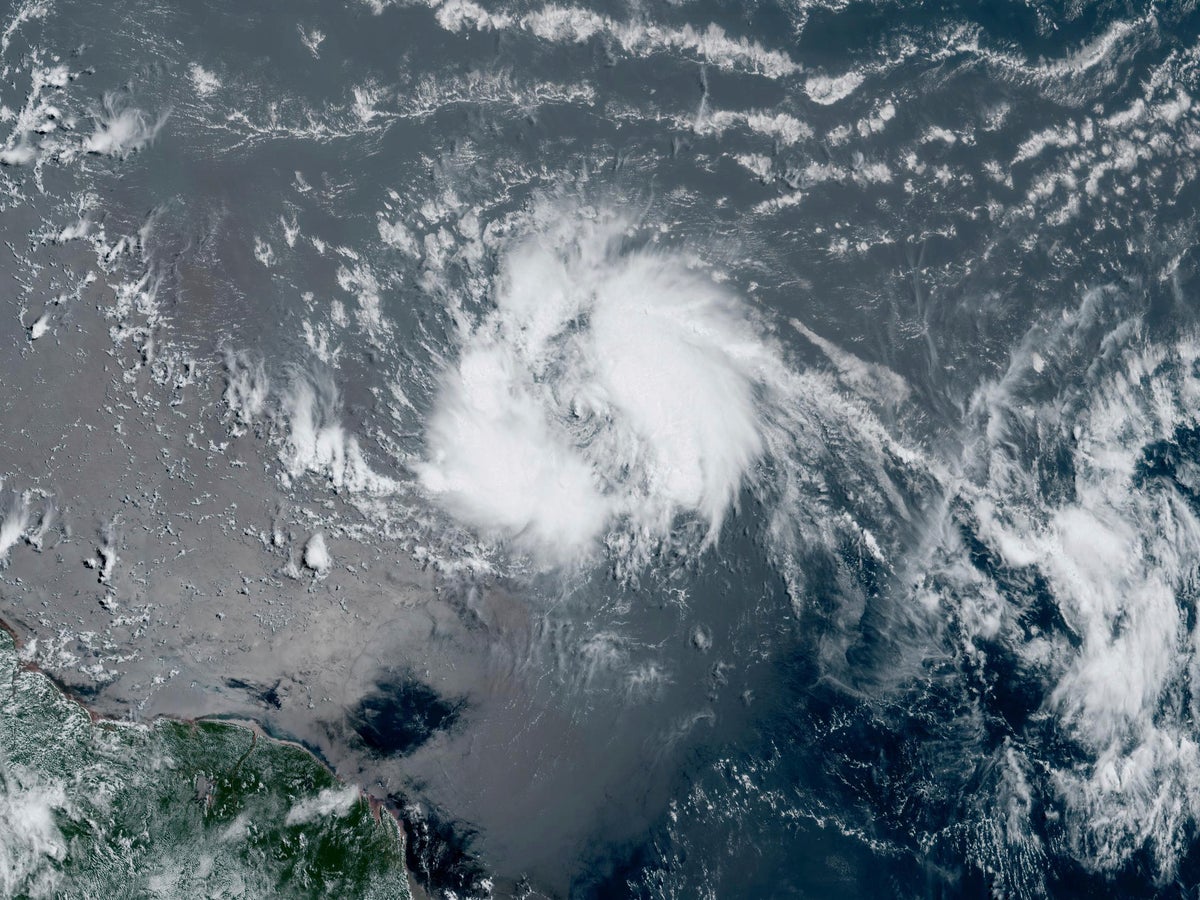
Tropical Storm Bret is no longer expected to become a hurricane but parts of the Caribbean remain on alert for severe weather conditions.
The center of Bret could move across portions of the Lesser Antilles islands on Thursday afternoon through Thursday night, the US National Hurricane Center said.
The region is rushing to prepare for an unusually early storm packing strong winds and torrential rains.
Storm Bret is currently around 1,200 miles east of the southern Windward Islands with sustained winds of 40 miles per hour.
If Bret had strenghtened into a hurricane it would have been only the second hurricane to form in the tropical Atlantic in June in nearly a century, forecasters said. Hurricane Trinidad formed on 24 June 1933, east of the Lesser Antilles.
A tropical disturbance with an 80 per cent chance of cyclone formation is trailing Bret. No June on record has had two storms form in the tropical Atlantic.
Dominica's meteorological service said on Tuesday that the storm poses a “high threat” to the island and warned of landslides, flooding and waves of up to 12 feet.
Meanwhile, the hurricane center urged people in the Lesser Antilles, Puerto Rico and the Virgin Islands to closely monitor the storm and have their hurricane plans in place.
“Given the larger-than-usual uncertainty in the track and intensity forecasts, it is too early to specify the location and magnitude of where Bret’s associated hazards could occur,” the centre said.
Up to 10 inches of rain were forecast from the French Caribbean island of Guadeloupe south to St Lucia, and up to 4 inches of rain for Barbados and St. Vincent and the Grenadines.
Unfavorable winds and drier air are expected to later weaken Bret as it swirls through the central Caribbean region, with some models showing the storm could dissipate after affecting islands in the eastern Caribbean.
The storm formed Monday — an early and aggressive start to the Atlantic hurricane season that began on 1 June.
The National Oceanic and Atmospheric Administration has forecast 12 to 17 named storms for this year’s hurricane season. It said between five and nine of those storms could become hurricanes, including up to four major hurricanes of Category 3 or higher.
Virginia Tech meteorologist Stephanie Zick said she expects to see a higher than average number of storms rapidly intensify this season given warmer sea surface temperatures. She also noted that flooding from tropical systems that make landfall has caused the most deaths in the past 10 years.
“The hazards associated with tropical storms can occur hundreds of miles away from the storm centre," she said.







